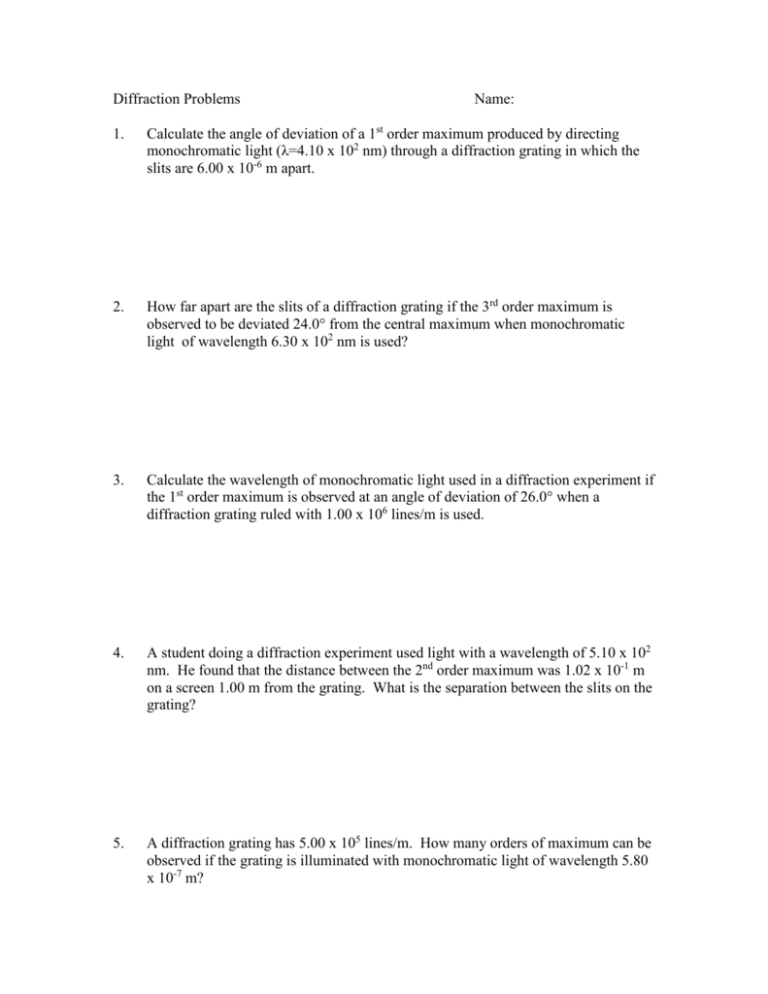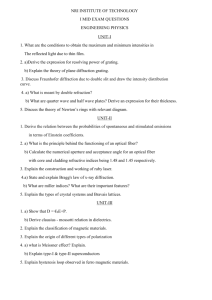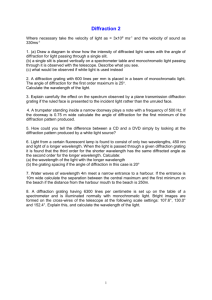Diffraction Worksheet 1
advertisement

Diffraction Problems Name: 1. Calculate the angle of deviation of a 1st order maximum produced by directing monochromatic light (λ=4.10 x 102 nm) through a diffraction grating in which the slits are 6.00 x 10-6 m apart. 2. How far apart are the slits of a diffraction grating if the 3rd order maximum is observed to be deviated 24.0° from the central maximum when monochromatic light of wavelength 6.30 x 102 nm is used? 3. Calculate the wavelength of monochromatic light used in a diffraction experiment if the 1st order maximum is observed at an angle of deviation of 26.0° when a diffraction grating ruled with 1.00 x 106 lines/m is used. 4. A student doing a diffraction experiment used light with a wavelength of 5.10 x 102 nm. He found that the distance between the 2nd order maximum was 1.02 x 10-1 m on a screen 1.00 m from the grating. What is the separation between the slits on the grating? 5. A diffraction grating has 5.00 x 105 lines/m. How many orders of maximum can be observed if the grating is illuminated with monochromatic light of wavelength 5.80 x 10-7 m? 6. Monochromatic light with a frequency of 6.50 x 1014 Hz is directed on a diffraction grating ruled with 4.00 x 104 lines/m. An interference pattern is produced on a screen 1.10 m from the grating. How far is the 1st order maximum from the central maximum? 7. Why is a bright spot (central maximum) always produced in the same spot on the screen regardless of the wavelength of light used.











